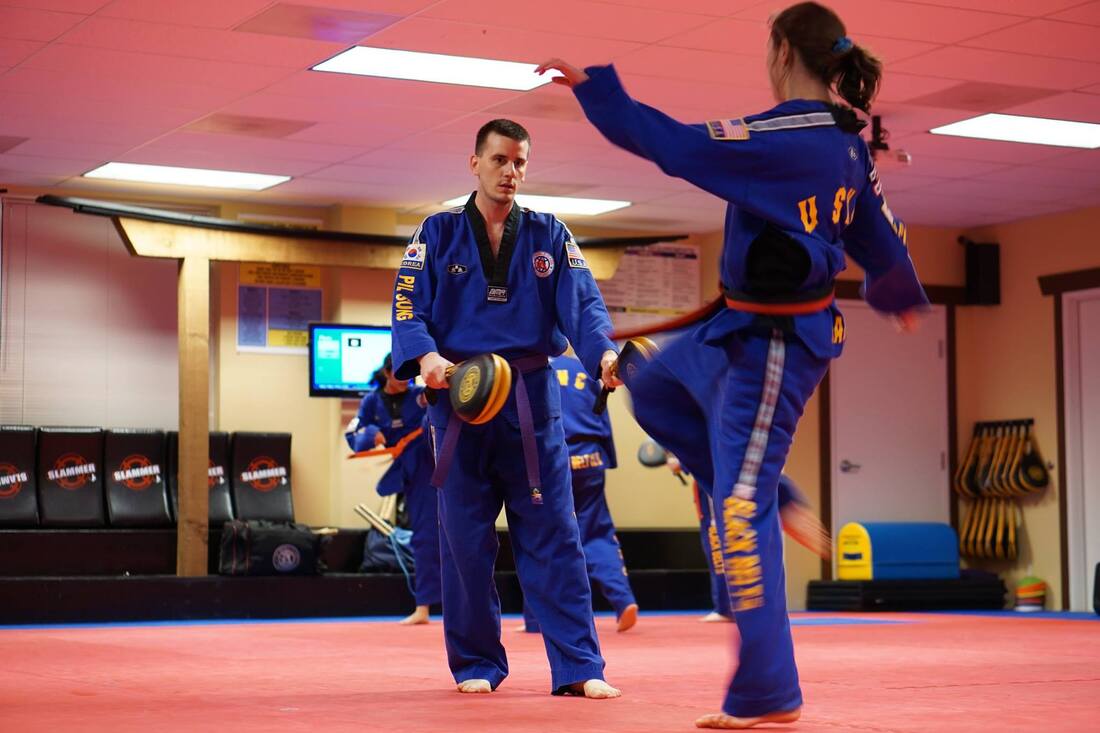Benefits of martial arts for seniorsMartial arts can improve balance and flexibility for seniors. It also boosts confidence and provides mental stimulation. Additionally, martial arts can enhance overall physical health and provide a sense of community and support for seniors.
Choosing the right martial artBefore starting your martial arts journey, it's important to choose the right martial art that suits your interests and physical abilities. Consider the following tips as you make your decision:
Finding the ideal training programTo find the right training program for you, start by considering your fitness level, any physical limitations, and your martial arts goals. Look for classes specifically designed for seniors or beginners, as they often focus on safety and low-impact techniques.
Some factors to consider when choosing a program:
Understanding physical limitationsAs we age, our bodies undergo changes that can affect our physical abilities. It's vital to recognize and understand these limitations before starting any new physical activity. In the realm of martial arts for seniors, it's important to take into account any past injuries, joint stiffness, or balance issues that may impact your practice. By acknowledging and addressing these physical limitations, you can choose the right martial arts style and modify techniques to suit your individual needs. It's crucial to prioritize safety and wellness as you embark on your martial arts journey as a senior.
Importance of proper warm-up and cool-downProper warm-up and cool-down is crucial in martial arts for seniors. Without it, you risk injury and muscle strain. Warm-up helps the body prepare for activity by increasing blood flow to muscles and improving flexibility, reducing the chance of injury. A good warm-up should include light aerobic exercise and dynamic stretching. Cooling down after exercise helps your heart rate and breathing return to normal gradually. It also aids in reducing muscle soreness. Stretching during the cool-down helps maintain flexibility. Remember, taking care of your body before and after training is key to enjoying your martial arts journey as a senior.
Starting slow and setting realistic goalsIt's important to start slow and set realistic goals when beginning your martial arts journey as a senior. Taking gradual steps and setting achievable targets will help you build a strong foundation and prevent injuries. Make sure to listen to your body, understand your limitations, and work with your instructor to tailor your training accordingly. Remember, progress is a marathon, not a sprint. Stay consistent and celebrate each milestone along the way to keep yourself motivated and engaged in your martial arts practice.
Building strength and flexibilityTo build strength and flexibility as a senior practicing martial arts, start with gentle exercises and gradually increase intensity. Incorporate stretching into your routine to improve flexibility and reduce the risk of injury. Practice basic martial arts moves to enhance muscle strength and coordination. A balanced diet and proper hydration are essential for maintaining muscle health and flexibility. Remember to listen to your body and consult with a fitness instructor or healthcare provider before starting any new exercise regimen.
Role of patience and perseveranceIn martial arts, patience and perseverance are crucial. These qualities help seniors stay consistent in their practice and progress steadily. Patience allows you to take your time learning techniques and mastering moves without getting frustrated. Perseverance pushes you to keep going, even when faced with challenges or setbacks. With the right mindset, seniors can excel in martial arts regardless of age.
Safety tips and injury preventionAlways warm up before starting martial arts exercises to prevent injuries. Wear proper gear like supportive shoes and comfortable clothing. Listen to your body and don't push beyond your limits. Focus on proper technique to avoid strains and sprains. Consult with a healthcare provider before starting any new physical activity, especially if you have pre-existing conditions. Stay hydrated and take breaks when necessary. Notify your instructor of any injuries or concerns immediately.
Celebrating progress and staying motivatedMaintaining a positive attitude and recognizing your achievements are essential in martial arts. Setting small goals and acknowledging your progress along the way can help you stay motivated. Remember, every step forward is a victory worth celebrating! So, whether it's mastering a new technique or simply showing up for your training sessions, take pride in your accomplishments and keep pushing yourself to reach new heights.
Choosing the right martial artBefore starting your martial arts journey, it's important to choose the right martial art that suits your interests and physical abilities. Consider the following tips as you make your decision:
- Assess your fitness level: Determine what level of physical activity you're comfortable with and choose a martial art that aligns with your fitness goals.
- Research different martial arts: Explore various disciplines like karate, taekwondo, or tai chi to find one that resonates with you.
- Visit local dojos: Attend classes or observe sessions at different martial arts schools to get a feel for their teaching styles and atmosphere.
- Consult with instructors: Speak with instructors to understand their approach to teaching and whether it matches your learning style.
- Consider any health concerns: Take into account any existing health conditions or physical limitations when selecting a martial art.
Finding the ideal training programTo find the right training program for you, start by considering your fitness level, any physical limitations, and your martial arts goals. Look for classes specifically designed for seniors or beginners, as they often focus on safety and low-impact techniques.
Some factors to consider when choosing a program:
- The style of martial arts you’re interested in
- The qualifications and experience of the instructors
- The class schedule and location
- The overall atmosphere and community of the dojo or gym
Understanding physical limitationsAs we age, our bodies undergo changes that can affect our physical abilities. It's vital to recognize and understand these limitations before starting any new physical activity. In the realm of martial arts for seniors, it's important to take into account any past injuries, joint stiffness, or balance issues that may impact your practice. By acknowledging and addressing these physical limitations, you can choose the right martial arts style and modify techniques to suit your individual needs. It's crucial to prioritize safety and wellness as you embark on your martial arts journey as a senior.
Importance of proper warm-up and cool-downProper warm-up and cool-down is crucial in martial arts for seniors. Without it, you risk injury and muscle strain. Warm-up helps the body prepare for activity by increasing blood flow to muscles and improving flexibility, reducing the chance of injury. A good warm-up should include light aerobic exercise and dynamic stretching. Cooling down after exercise helps your heart rate and breathing return to normal gradually. It also aids in reducing muscle soreness. Stretching during the cool-down helps maintain flexibility. Remember, taking care of your body before and after training is key to enjoying your martial arts journey as a senior.
Starting slow and setting realistic goalsIt's important to start slow and set realistic goals when beginning your martial arts journey as a senior. Taking gradual steps and setting achievable targets will help you build a strong foundation and prevent injuries. Make sure to listen to your body, understand your limitations, and work with your instructor to tailor your training accordingly. Remember, progress is a marathon, not a sprint. Stay consistent and celebrate each milestone along the way to keep yourself motivated and engaged in your martial arts practice.
Building strength and flexibilityTo build strength and flexibility as a senior practicing martial arts, start with gentle exercises and gradually increase intensity. Incorporate stretching into your routine to improve flexibility and reduce the risk of injury. Practice basic martial arts moves to enhance muscle strength and coordination. A balanced diet and proper hydration are essential for maintaining muscle health and flexibility. Remember to listen to your body and consult with a fitness instructor or healthcare provider before starting any new exercise regimen.
Role of patience and perseveranceIn martial arts, patience and perseverance are crucial. These qualities help seniors stay consistent in their practice and progress steadily. Patience allows you to take your time learning techniques and mastering moves without getting frustrated. Perseverance pushes you to keep going, even when faced with challenges or setbacks. With the right mindset, seniors can excel in martial arts regardless of age.
Safety tips and injury preventionAlways warm up before starting martial arts exercises to prevent injuries. Wear proper gear like supportive shoes and comfortable clothing. Listen to your body and don't push beyond your limits. Focus on proper technique to avoid strains and sprains. Consult with a healthcare provider before starting any new physical activity, especially if you have pre-existing conditions. Stay hydrated and take breaks when necessary. Notify your instructor of any injuries or concerns immediately.
Celebrating progress and staying motivatedMaintaining a positive attitude and recognizing your achievements are essential in martial arts. Setting small goals and acknowledging your progress along the way can help you stay motivated. Remember, every step forward is a victory worth celebrating! So, whether it's mastering a new technique or simply showing up for your training sessions, take pride in your accomplishments and keep pushing yourself to reach new heights.






 RSS Feed
RSS Feed